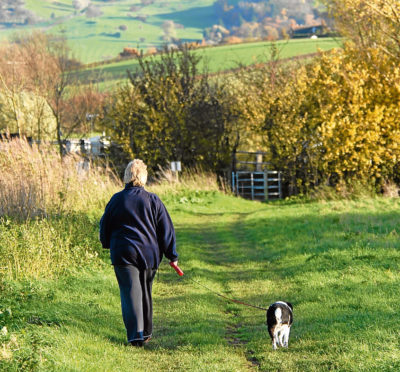The cost of dog attacks on Scottish livestock has quadrupled in the last two years to more than £50,000, NFU Scotland (NFUS) has revealed.
The union used the latest meeting of the Scottish National Partnership Against Rural Crime (SPARC) to highlight the “ongoing blight” that livestock worrying by dogs causes for Scottish farmers and crofters.
Following on from recent incidents across Scotland, which saw uncontrolled dogs kill and inflict horrific injuries on sheep, the union expressed its frustration that the issue continues to occur.
Rural insurer NFU Mutual recently revealed that the cost of claims related to livestock worrying has reached a record level of £1.6million across the UK.
With lambing now under way, NFU Scotland has joined Police Scotland, Scottish Natural Heritage, Scottish Land and Estates, National Sheep Association (Scotland) and the Kennel Club in a campaign that will run until May, raising awareness among dog owners about the devastating effects of livestock worrying.
At this week’s SPARC meeting, attended by Cabinet Secretary for Rural Economy and Connectivity Fergus Ewing, the union’s legal and technical chairman, Jamie Smart, said: “The graphic images of dead and mauled sheep underlined that the impact of irresponsible dog ownership on farmers’ livelihoods cannot be underestimated.
“While Police Scotland has responded positively to this issue, there is a real lack of awareness at local authority level about the true impact of this problem.
“Local authorities are responsible for upholding access rights under the 2003 Act, but NFUS is not convinced that this is translating into the assistance that is required for farmers where things to go wrong. There are some interim steps which can assist where dogs are repeatedly out of control, including the use of dog control notices.
“However, we know anecdotally that not all local authority dog wardens are keen to use these. Once in place, if breached, then problem dogs can be removed or destroyed.
“NFUS would like to see all local authorities using these as a matter of course to deal with repeatedly straying dogs.”
NFUS policy manager Gemma Cooper added: “Last year there were a number of instances where farmers were left with no choice but to destroy dogs they caught worrying their stock, and in addition to this a number of owners received hefty sanctions.
“We welcome robust enforcement of the legislation in this area and urge our members to continue to report all incidents of livestock worrying to Police Scotland.”
